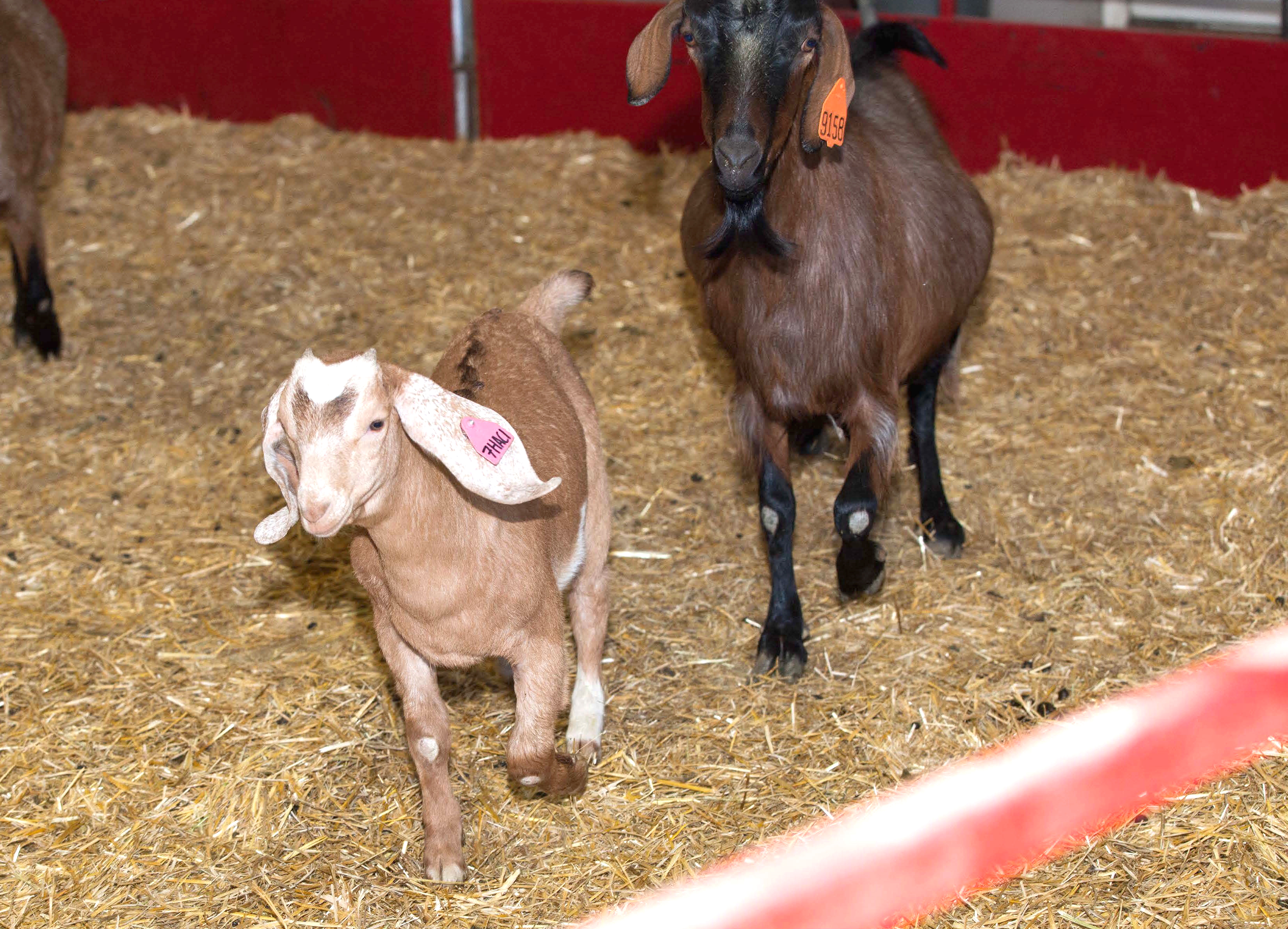Cures From (Un)Common Animals
by Lynnette Harris

photo by Dennis Hinkamp

Working with antibodies to fight diseases has been going on since the 19th century, but genetically designing large animals to produce fully human antibodies is a promising new technology and it has reconnected one College of Agriculture and Applied Sciences alumnus with the college.
Eddie Sullivan earned a Ph.D. in animal science at Utah State University, working with then associate professor Ken White. Sullivan has since built a career in the biotechnology industry and is currently president, co-founder and CEO of South Dakota-based SAB Biotherapeutics, and also serves on the executive committee of the Biotechnology Innovation Organization, the world’s largest biotech trade association.
SAB Biotherapeutics uses gene editing to locate specific molecules that produce a cow’s immunoglobulin and replace them with a DNA sequence that creates fully human immunoglobulin. This kind of editing is sometimes described as the biological version of a word processor’s “find and replace” tool, so once the new DNA sequence is inserted it continues to replicate. That means that when an animal with this precisely modified DNA is injected with a specific disease-causing agent, it produces human antibodies against it and plasma from the animal can be purified and used to enhance a human body’s own ability to fight disease. Immunotherapy is promising for treating cancers, infectious diseases, autoimmune diseases and inflammation.
Transferring immunity from animals to help a human fight disease has been going on for centuries. There are downsides though as some people have adverse reactions to animal antibodies, but human antibodies cannot be created in a laboratory. SAB’s approach aims to avoid that pitfall because the engineered animals produce human antibodies. The company has a herd of cattle at its South Dakota “pharm” and two of its treatments are in clinical trials, and an off-shoot of the company is now in Utah.
“As we looked at expanding our technology to goats, the collaboration with Utah State University was a natural fit to work with their researchers based on their deep expertise in genetic engineering that I’ve been very familiar with,” Sullivan said. “We also believe Utah is the right place to commercialize products from the platform with the regional specialty in medical testing and diagnostics.”
Irina Polejaeva and Zhongde Wang in USU’s Department of Animal, Dairy and Veterinary Sciences are collaborating with SAB Capra, LLC, the Utah-based subsidiary, and USU is currently home to one very special goat that produces human antibodies. Lilly Star is a little goat with an important job: proving that goats can be genetically engineered to produce human antibodies and being the start of successful embryo transfers that will produce clones with her unique genes.
“Goats are cheaper to produce, have a shorter gestation period and shorter time for the immune system to mature compared to cattle,” Polejaeva said. “Therefore, they can produce therapeutic products faster. Goats are also desirable for products that require smaller volumes, such as producing a treatment specific to one person.”
Goats are routinely raised in many countries where emerging infectious diseases are a concern, making them potentially important contributors to global public health. The potential for genetically engineered animals to play a role in fighting disease was recognized by the World Health Organization, which selected SAB Biotherapeutics as having one of the top approaches to develop in preparation for managing and treating infectious diseases that could cause epidemics.
“Our platform is gaining traction with several treatments in clinical trials,” added Sullivan. “We also have several other immunotherapies for disease targets in development with collaborators around the globe; and our first production pharm under construction. We’re well on our way to the clinic and making a significant impact for patients.”
Right now Lilly Star looks like just another little goat, but she could be the start of something big.

